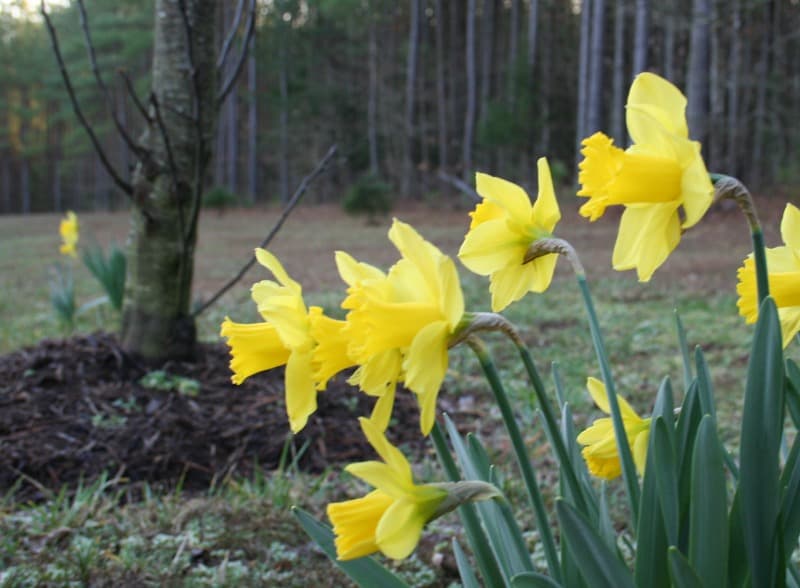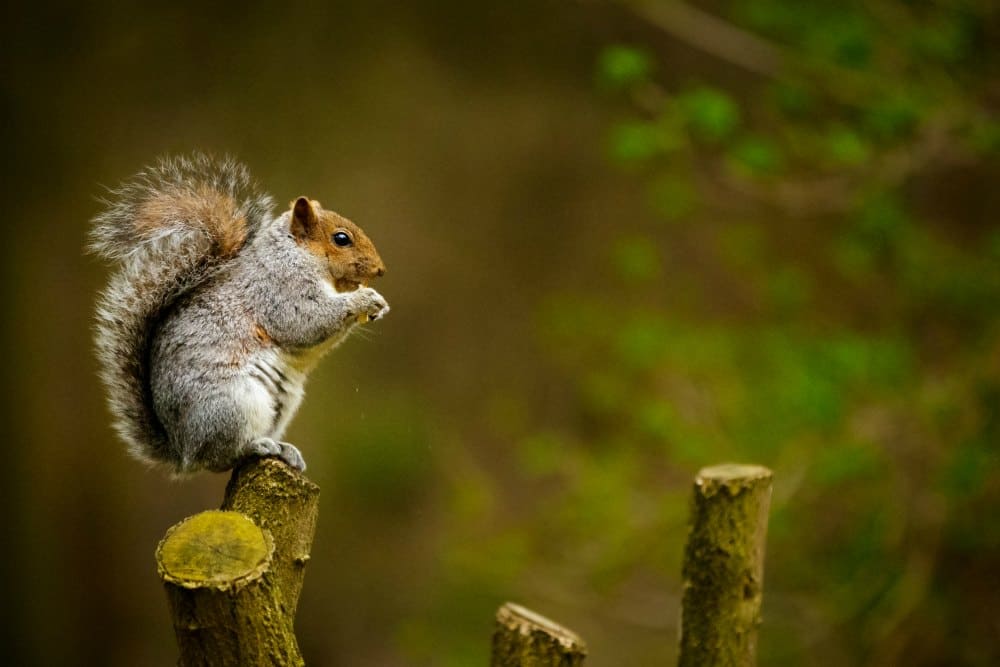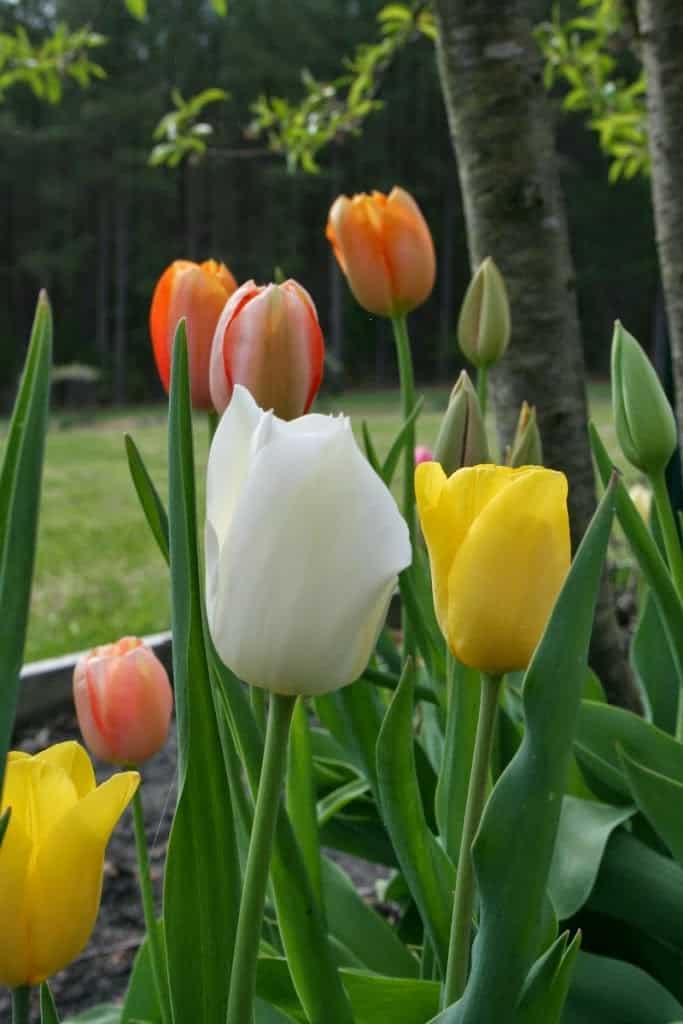Keep Squirrels Away from Bulbs
Keeping Deer, Rabbits and Other Critters from Spring Bulbs
Nothing is more disheartening for a gardener than planting dozens of tulips and waiting for the breathtaking floral display in the spring…only to find every single flower bitten off just when they’re about to bloom. Or you head out to the garden on a crisp fall day, trowel and bag of tulip bulbs in hand, and plant 100 bulbs…only to find them all dug up, chewed and strewn about the yard the next morning. What’s going on?
Many spring-flowering bulbs such as tulip, crocus and others taste good to hungry creatures. During the fall, squirrels and rodents dig up the bulbs. Tempted by the freshly turned earth, in search of their fellow creature’s stash of tasty nuts, they dig up your newly planted bulbs and ruin them before winter. Or worse, just when the colorful display is about to unfurl, something comes along at night and eats off every single flower.
There are steps you can take during planting to keep squirrels away from bulbs and prevent hungry deer, rabbits, squirrels and other rodents from ruining spring flowering bulbs. There are also natural and organic planting concepts you can use to discourage deer from eating spring flowers. While no “deer proofing” method or method of repelling hungry creatures is absolutely foolproof, these simple methods have worked for many gardeners who crave beautiful spring flowers but battle the local wildlife over the spring flowering bulbs.
Keep Squirrels Away from Bulbs During Planting
Spring flowering bulbs are planted during the late fall, when the bulbs have time to settle down and benefit from many weeks of winter cold. Many gardeners often battle squirrels, rabbits, mice, voles and other creatures during the fall immediately after planting. The freshly turned earth can fool a squirrel into thinking a fellow squirrel used that patch of ground to hide tasty nuts and acorns, and his curiosity gets the better of him. Once the samples the tulips, he’s likely to keep digging and noshing on them until most of your hard work is ruined. Mice and voles as well as many other creatures do the same, sampling your expensive tulips and ruining them.
Two products can be applied during fall planting to keep squirrels away from bulbs and discourage other creatures from nibbling on bulbs. These include:
- Ropel: Ropel is a commercial liquid product that won’t harm or kill wildlife or domestic animals. Instead, the liquid leaves a horrible, bitter aftertaste. Once an animal nibbles on a Ropel-treated bulb, they’ll leave the rest alone. Ropel is available as a ready-to-use liquid at major home and garden centers nationwide. When using Ropel, follow the label directions carefully. Wear rubber gloves and do not get any of the product on your skin. Do not use it on or near edible crops, since it will leave a horrible aftertaste on those, too. If you get it on your hands and accidentally touch your mouth, you’ll know instantly why wildlife leaves Ropel-treated bulbs alone!
- Hot pepper flakes: Hot pepper flakes are a time honored organic gardening method. Buy them in bulk or use cheap packages of hot pepper flakes purchased at the dollar store or a discount store. Sprinkle them in the planting hole and dip your dry bulb into them. The pepper also stings the taste buds of the wildlife to discourage them from noshing on the flower bulbs.
Discourage Wildlife After Planting
Both Ropel and hot pepper flakes discourage creates who’ve already investigated the newly planted bulbs and dug them up. How do you discourage creatures from chewing on the emerging plants in the spring or from visiting the garden once the flowers bloom?
- Sprinkle Milorganite in the garden: Milorganite is an organic gardening product that offers slow-release fertilizer and repels wildlife. While your human nose won’t detect an odor, deer, rabbits and other creates don’t like the scent of it and will leave treated areas alone. Milorganite is primarily a garden fertilizer, featuring 5-2-0 or 5% nitrogen, 2% phosphorous and 0% potash.
- Place dog or human hair in the garden: If you have a dog, after brushing her out, remove the hair and place it near the plants you want to protect. You can also remove hair from your hairbrush and place it around the flowers. Both leave a scent that discourages animals.
Anything with the strong scent of people or predator animals such as dogs discourages wildlife. If you do have a dog, walking your dog around the garden area several times a day also leaves a scent imprint that may keep squirrels away from bulbs.

Plant Deer Resistant Flowers
Depending on where you live, such methods may not work well with deer. Hungry deer eat anything, including all the ornamental shrubs and plants near your home. The best recourse for homeowners facing the nonstop onslaught from deer is to plant what are known as ‘deer resistant’ flowers. Deer-resistant does not mean “deer proof” but deer tend to take one bite and walk away from such plants. Among the spring flowering bulbs, daffodils and narcissus are deer resistant.
If you think daffodils are boring, it’s time to explore the many varieties now available. King Alfred yellow daffodils offer a classic landscape solution, but there are now yellow and white varieties, pink and white, all white, double flowering and more. Daffodils also offer the added benefit of naturalizing or returning year after year with more added to your garden.

Photo by Shane Young on Unsplash
Keep Your Favorite Tulips and Other Flowers Near the House
All of these suggestions work some of the time…but sometimes, deer, rabbits, squirrels and other creatures are just too persistent (or hungry) to be discouraged. As a last resort, plant tulips and other tender spring-flowering bulbs near your home or in pots and keep the pots on the desk. The noise and motion from inside the home should discourage all but the boldest animals – and if you see one approaching, you can at least make noise and scare it away!
After a long, cold and dreary winter, the burst of brilliant color from spring-flowering bulbs is a welcome harbinger of spring. Take steps during the fall to ensure your bulbs are ready for spring’s showcase.





